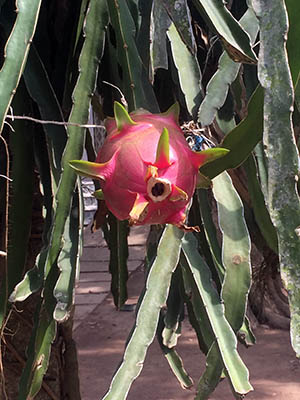Asian Herbs : For Flavor and for Health
By Mai Pham, Author of the Pleasures of the Vietnamese Table
The role of herbs in Asian cooking and recipes.
 For centuries, cultures and cuisines around the world have embraced herbs,
not only for their flavors and aromas but also for their medicinal qualities.
In Thailand, cooks love to throw cupfuls of basil into their salads, stir-fries
and soups, treating them no differently than vegetables. In Laos and Cambodia,
herbs are used to garnish and perfume noodle soups, broth soups and salads.
For centuries, cultures and cuisines around the world have embraced herbs,
not only for their flavors and aromas but also for their medicinal qualities.
In Thailand, cooks love to throw cupfuls of basil into their salads, stir-fries
and soups, treating them no differently than vegetables. In Laos and Cambodia,
herbs are used to garnish and perfume noodle soups, broth soups and salads.
But nowhere do fresh herbs play as important a role as they do in Vietnam, where a typical meal often includes, among other things, a huge platter of table salad piled high with rau thom, or aromatic herbs. The selection varies according to the meal. If the table salad accompanies pho (rice noodles with beef soup), it will include saw-leaf and Asian basil. If it goes with grilled meats, it will have a generous amount of green and red perilla and different kind of mint. To eat, we either tear the greens into small pieces and add them to our bowls, or use them to wrap little pieces of meat or seafood and dip in sauce. There is no question that fresh herbs play a critical role at the Vietnamese table.
The high consumption of herbs fulfills both practical and culinary purposes. The traditional Vietnamese diet relies mostly on a huge amount of rice, so herbs (as well as fish sauce) are necessary to make that staple food more palatable. Herbs are also easily available and affordable. Many grow wild, thriving along the edges and banks of wet rice fields. Unlike the Western notion of using herbs in small amounts to season food, the Vietnamese use them as greens. For example, when savoring Grilled Shrimp on Sugarcane, a single diner can easily consume two to three bunches of fresh herbs, picking the leaves off the springs as the meal progresses.
Rau thom is also considered a valuable yin food. Like the Chinese, the Vietnamese believe in the necessary balance of the yin and yang energies. Foods are classified as either nong (hot, or yang) or mat (cool, or yin). Most starches and proteins constitute the hot energy and as a rule, must be paired with the cool herbs and vegetables. But beyond this, herbs are also eaten to prevent or cure specific illnesses. For example, the various types of mint and basil are believed to aid digestion and blood circulation and to promote general wellness.
When purchasing herbs, choose the freshest-looking sprigs you can, free of blemishes. Don't wash them until you're ready to use them. Store them in a plastic bag in the refrigerator. (The Vietnamese like to blow air into the bags to prevent the herbs from getting bruised.) Before using, trim to the desired length, then refresh by submerging the whole sprigs in cool water, soaking them for 30 minutes, draining or spinning them dry in a salad spinner.
